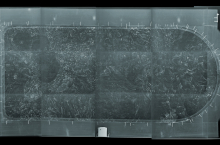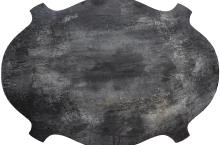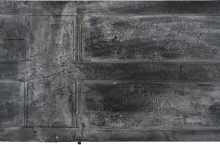
Blackened Paintings
Monochrome paintings by Sophie La Rosière, consisting of black encaustic on salvaged wooden panels and doors. It was later found that there were other oil paintings under this layer.
Two of these panels, initially believed to be works of modern art, were bought by Toronto collectors Samara Walbohm and Joe Shlesinger in the 1980s at a brocante in Saint-Germain-des-Prés (Paris). Later, similar objects were found in Rosière’s abandoned studio and in the Lesouëf library - a place adjacent to the retirement home for artists in Nogent-sur-Marne, France, where Sophie La Rosière died in 1948 and where artworks belonging to former residents are occasionally stored. (These objects sometimes stay there indefinitely, if not retrieved by family members after their owner dies).
Two works were found wrapped in old linen, instead of given encaustic layers.
One painting was found hidden in the back of a mirror (SLR 214).
After doing exploratory x-rays, it was discovered that iconography of an erotic nature done in oil paints is hidden underneath the black encaustic paint. These works can be dated to around 1917.
XRays
The investigation into Sophie La Rosière’s legacy includes x-rays of her “Blackened Paintings”, undertaken by the C2RMF laboratory (Centre de recherche et de restauration des musées de France), Paris, and the Michener Institute, Toronto. Thereby, from the outside still hidden underneath a thick black encaustic layer, any original oil-painting elements executed with at the time common lead-white become visible. Now this series of her work, dating around 1917, is visible to us through this analysis. What can be identified is an iconography of an erotic nature, that sparks further questions and investigations beyond Rosière’s work into her social and historic fabric.
All these works are catalogued and and have been given inventory numbers.














